
Author: Nancy, PANews
Currently, the divergence of bullish and bearish sentiment regarding Ethereum is becoming increasingly apparent. With the recent surge in coin prices, the demand for staking withdrawals has significantly increased, and market concerns about potential downside risks are growing. Will there be large-scale selling pressure on Ethereum as expected?
Multiple factors drive Ethereum staking to a new high in liquidation scale.
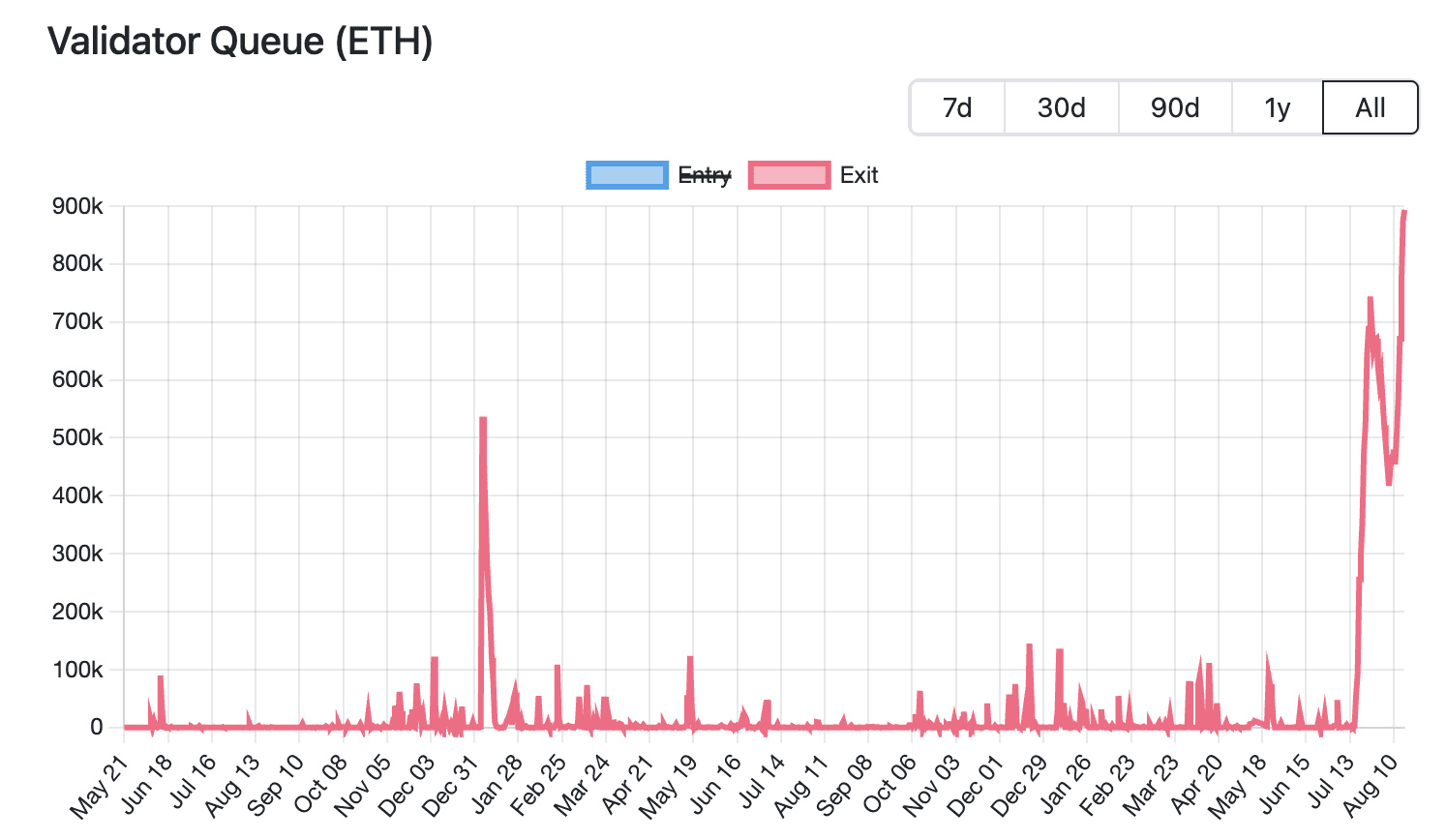 Currently, the scale of ETH unstaking has reached a historic peak. According to Validator Queue data, as of August 18, over 87,000 ETH (worth approximately $3.76 billion) are queued to exit the Ethereum network, setting a new historical record, and have increased for six consecutive days, with an estimated wait time of 15 days and 4 hours. In contrast, new staked ETH waiting to enter is only about 26,000 (approximately $1.12 billion), with an expected activation delay of about 4 days and 12 hours.
Currently, the scale of ETH unstaking has reached a historic peak. According to Validator Queue data, as of August 18, over 87,000 ETH (worth approximately $3.76 billion) are queued to exit the Ethereum network, setting a new historical record, and have increased for six consecutive days, with an estimated wait time of 15 days and 4 hours. In contrast, new staked ETH waiting to enter is only about 26,000 (approximately $1.12 billion), with an expected activation delay of about 4 days and 12 hours.
The large-scale exit from this round of pledging is driven by multiple factors, involving market strategy adjustments, institutional capital flows, and profit-taking demands due to price fluctuations.
Rising lending rates trigger cyclical strategy liquidations
The significant rise in ETH lending rates has impacted leveraged strategies, thereby spurring a wave of validator exits. Last month, a large amount of ETH was withdrawn from Aave's lending pool, resulting in a tightening of ETH supply on the platform and a sharp rise in lending rates. Official data shows that in July, Aave's ETH lending annual interest rate once surged from about 2.5% to 10.6%, far exceeding the approximately 3% staking yield of Ethereum at that time.
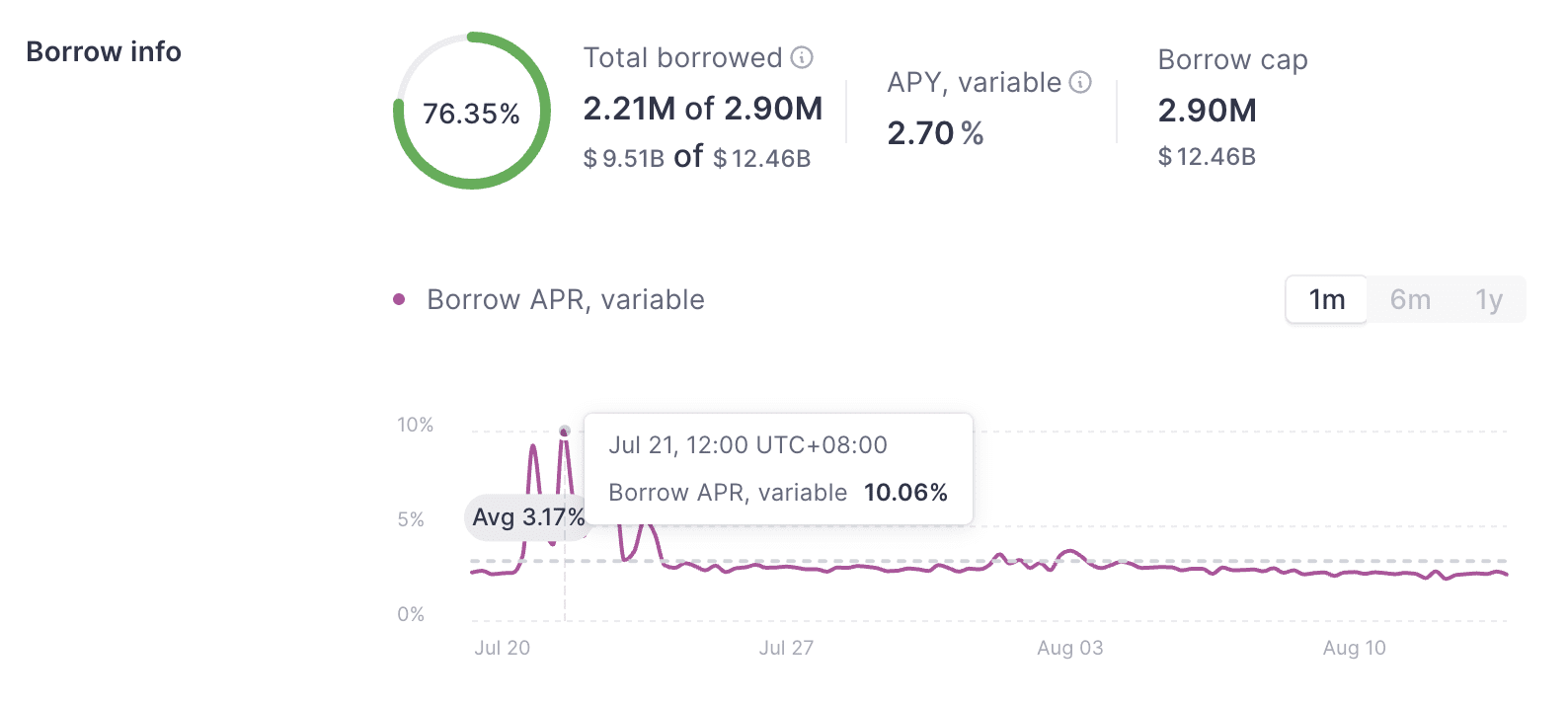
The rise in interest rates has disrupted the trading logic of cyclical arbitrage. Originally, investors could use staked ETH as collateral and then borrow more ETH for leveraged operations. However, this leverage model lost its appeal after the sudden rise in interest rates, forcing traders to liquidate positions and unstake to repay loans or reduce leverage, thereby exacerbating exit demand.
LST/LRT decoupling amplifies arbitrage and liquidation risks.
The rise in lending rates has also exacerbated the decoupling of LST/LRT (such as stETH, weETH) from ETH. For example, Dune data shows that in July, the discount rate between stETH and ETH reached as high as 0.4%. This prompted arbitrageurs to buy liquidity staking tokens at low prices in the secondary market and earn the price difference by unstaking and redeeming the full ETH value, further clogging the Ethereum staking queue.
At the same time, although the market has not yet seen systemic liquidations due to price decoupling, underlying pressures are further prompting investors to exit early. According to recent analysis by Jlabs Digital analyst Ben Lilly, stETH is currently being withdrawn from Lido, with 32% of stETH (wstETH) being used as collateral for lending agreements, and decoupling could mean large-scale liquidations of lending agreements. Additionally, 278,000 wstETH are in a 'high-risk' state (defined as having a health factor between 1 and 1.1).
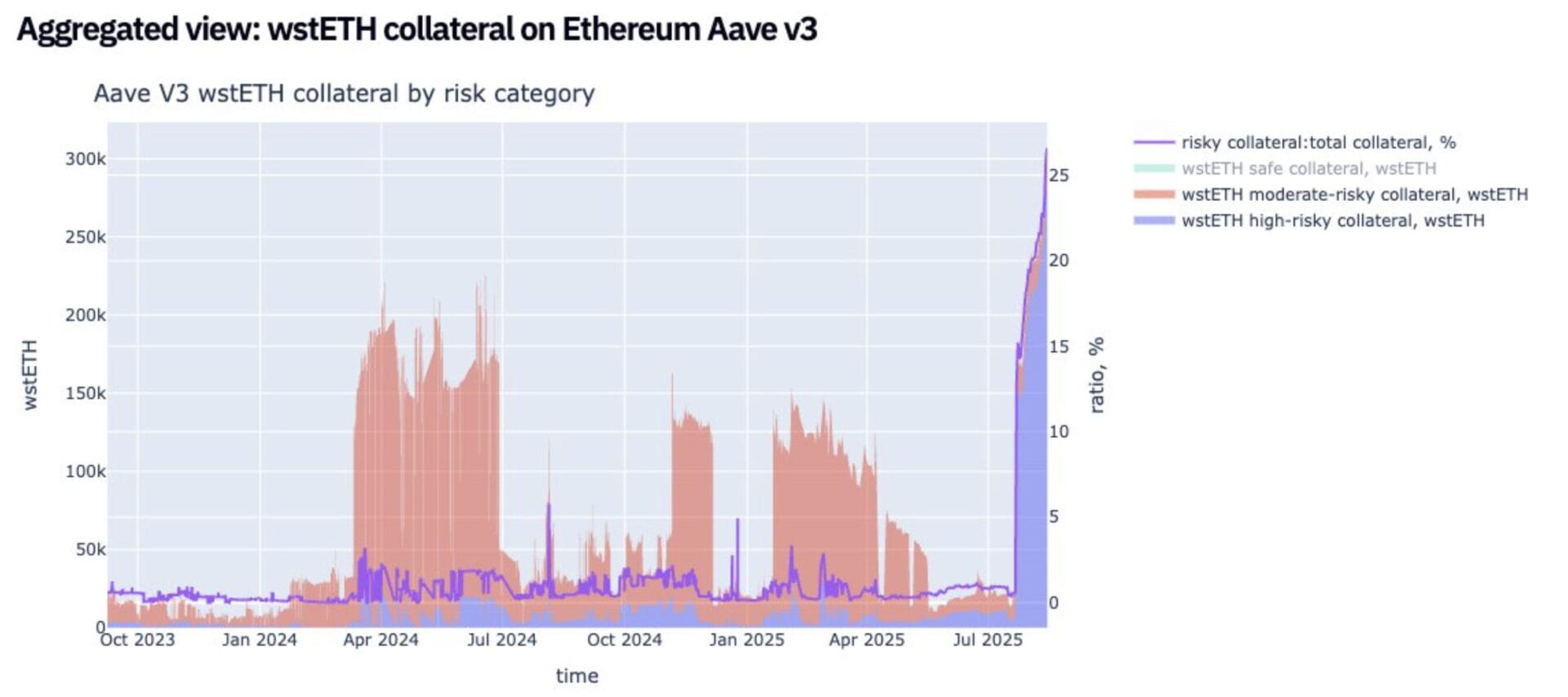
Bitwise senior investment strategist Juan Leon also stated that staking tokens like stETH can be traded at a discount, which reduces the collateral value and leads to risk reduction, hedging, or even liquidations, ultimately resulting in spot selling of ETH. The leveraged stETH circular trading conducted through DeFi protocol liquidity pools will no longer be profitable, and traders will no longer profit from liquidating positions and selling ETH to repay loans.
As a result, many investors choose to exit, and some whales opt to cut losses for quick cashing out. For example, Lookonchain recently monitored that a certain whale abandoned the queue for unstaking and directly exchanged 4,242.4 stETH for 4,231 ETH (worth $18.74 million), depositing it into Kraken for sale, resulting in a direct loss of 11.4 ETH (approximately $50,500).
Institutional capital migration, changes in the staking ecosystem.
The large-scale exit from ETH staking is also related to capital shifting to new staking protocols. As the main investors in Ethereum shift from retail to institutions, the staking market landscape is undergoing significant changes. Dune data shows that as of August 18, three of the top five staking protocols are centralized institutions: Binance, Coinbase, and Figment. In the past month, Lido, ether.fi, and P2P.og have seen significant ETH outflows, with Lido alone seeing more than 279,000 ETH flow out in a month, reducing its market share to 24.4%, a historic low; conversely, Figment saw inflows of over 262,000 ETH in the same month, making it the biggest winner.
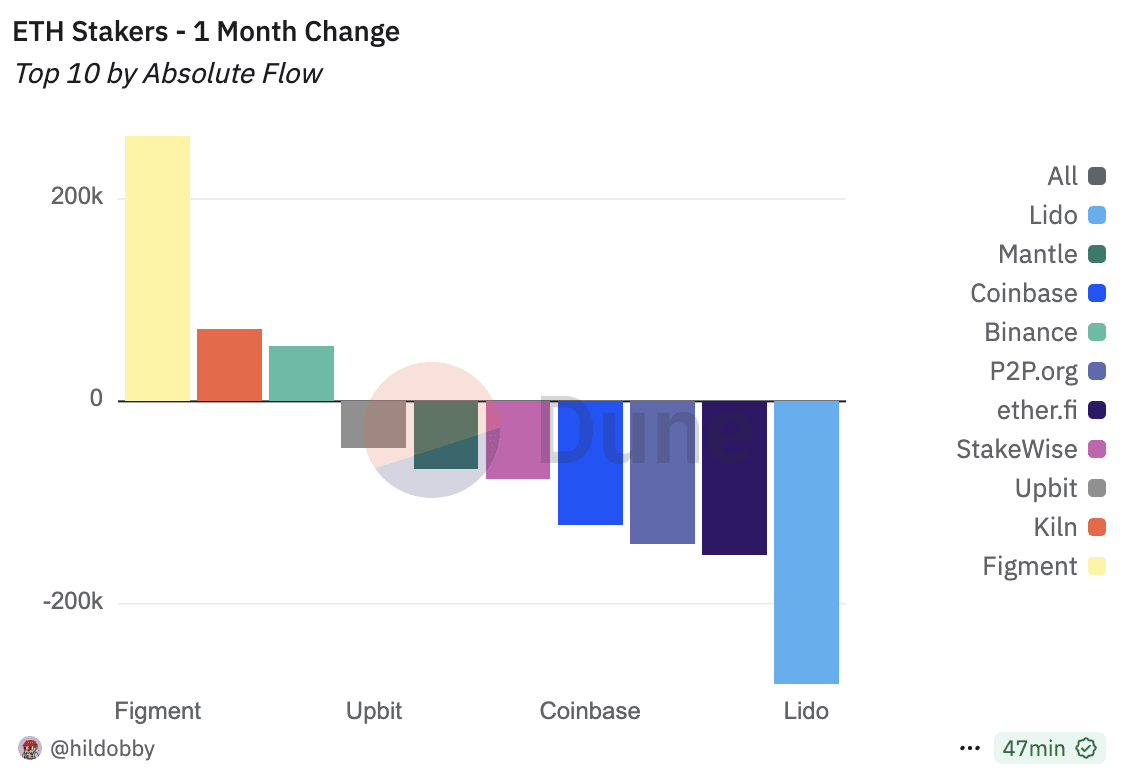
This trend of migration is driven by multiple demands for compliance and stability from institutions. For example, institutions require clear legal entities and compliance processes, while decentralized protocols struggle to meet regulatory requirements; decentralized network nodes are dispersed, making comprehensive auditing difficult, and global KYC almost impossible; centralized institutions can clearly assume liability for node failures, while decentralized protocols may be dispersed and not meet risk management expectations. In summary, institutional funds place more emphasis on compliance, accountability, and stability rather than the ideology of decentralization. This also means that in the ETH staking market, decentralized protocols are gradually shifting to a defensive stance, while centralized staking institutions are continuously expanding their share by virtue of compliance and stability.
Price increases stimulate profit-taking.
The rise in the scale of ETH unstaking is also driven by profit-taking demands resulting from rising prices. CoinGecko data shows that since April of this year, ETH prices have rebounded approximately 223.7% from their lows. Such rapid increases have provided substantial unrealized gains for early stakers, prompting some investors to choose to unstake and lock in profits, thereby increasing the liquidity supply pressure of ETH in the short term.
Large-scale selling pressure is unlikely to be released directly in the short term, and the market still has some support space.
Despite the fact that the scale of unstaking ETH has reached a historic high, raising market concerns about selling pressure, the limited release pace and the continued accumulation by institutions may provide some support for ETH.
On one hand, as mentioned earlier, the current wave of unstaking is driven by multiple factors, including cyclical strategy liquidations, arbitrage demands, and shifts to other staking providers. This means that not all unstaked ETH will directly enter the market for sale.
On the other hand, Ethereum's PoS mechanism has strict limitations on validator exits, requiring each validator to stake 32 ETH to participate in network consensus, and to ensure network stability, only 8-10 validators are allowed to exit per epoch (approximately every 6.4 minutes). As the demand for validator exits increases, the waiting queue will become significantly longer. Currently, it is estimated that the unstaked ETH will need about 15 days and 4 hours before it can truly be released to the market, so there will be no impact on liquidity supply in the short term.
Furthermore, from market data, there is currently a demand for over 61,000 ETH to be unstaked in Ethereum. However, the increased accumulation by institutional investors can cover potential selling pressure. According to data from strategicethreserve.xyz, as of August 18, the cumulative holdings of Ethereum reserve companies and various ETH spot ETFs reached 10.26 million ETH, accounting for over 8.4% of the total ETH supply. In the past half month, institutional investors have accumulated over 1.83 million ETH, far exceeding the current scale of unstaking. If the accumulation trend continues, it can effectively absorb potential selling pressure.
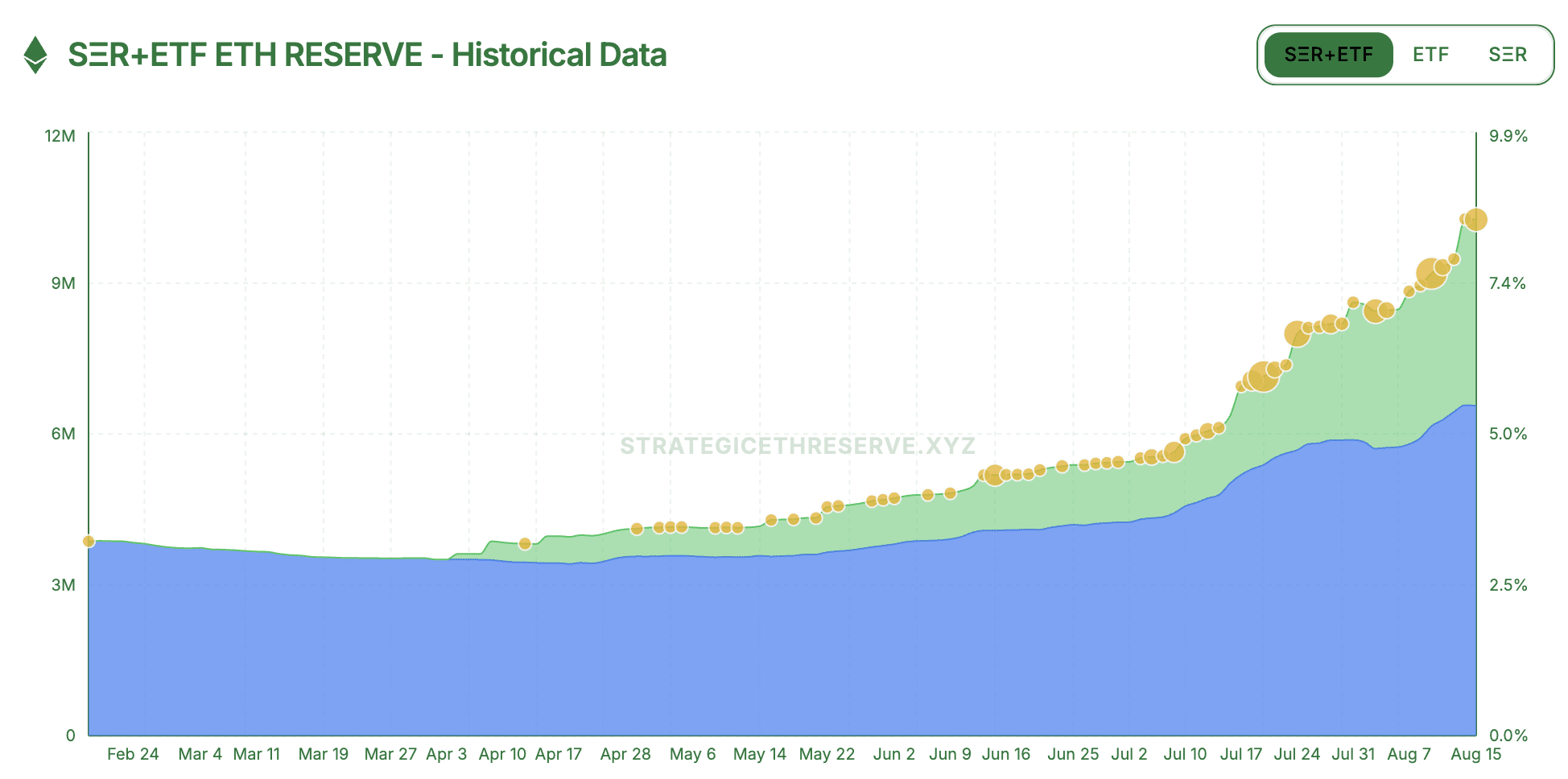
Overall, the recent high volatility of ETH prices may be a natural reaction to profit-taking and fluctuations in market sentiment. Although there is some uncertainty and short-term volatility pressure in the market, overall confidence in Ethereum remains unshaken, especially as the continued presence of institutional capital further strengthens market resilience.
(The above content is excerpted and reprinted with the authorization of partner PANews, original link)
"Over $3.7 billion worth of ETH is waiting to be unlocked, what is the risk of selling pressure on Ethereum?" This article was first published on (Blockke).

